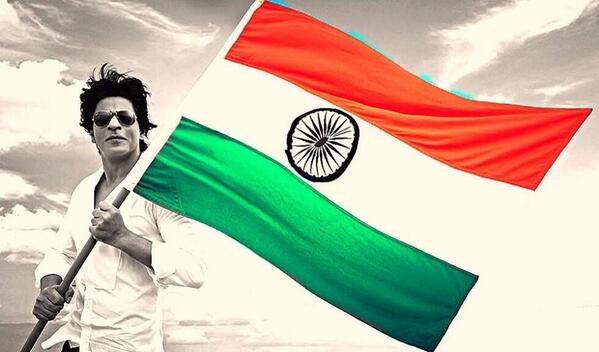The present form of Tricolour came into being at the meeting of Constitutional Assembly July 22, 1947. Since then it has served as the National Flag of the Dominion of India from August 15, 1947 to January 26, 1950. And there after as the National Flag of Republic of India.
Prior to its present form, it witnessed eight forms.
Indian flag in 1904-06: The history of the national flag dates back to between 1904 and 1906. It was made by sister Nivedita, an Irish disciple of Swami Vivekananda. Later, the flag was known as Sister Nivedita’s flag. Her flag comprised two colours-red and yellow. Red signified freedom struggle and yellow for victory. It had the words ‘Bonde Mataram’ in Bengali and a figure of Vajra, the weapon of lord Indra on it.
India Flag in 1906: In 1906 another flag designed. It was a tricolour of three equal strips of blue (top), yellow (middle) and red (lower). In the blue strip it had eight stars of slightly different shapes. The red strip had two symbols-a sun, and a star and a crescent. The yellow strip had ‘Vande Mataram’ written in Devnagiri script.
The same year witnessed another version of the flag. Though was also a tricolor, but it had different colours. It had orange, yellow and green and was known as ‘Calcutta flag’ or ‘Lotus flag’, for eight half open lotuses on it. The flag, unfurled at ‘Parsi Bagan square’, Kolkata August 7, 1906, was believed to have been designed by Sachindra Prasad Bose and Sukumar Mitra.
Indian Flag in 1907: In 1907 came the Madam Bhikaji Rustom Cama’s flag. The flag was collectively designed by Madam Bhikaji Cama, Vinayak Damodar Savarkar (Veer Savarkar) and Shyamji Krishna Verma. The flag was unfurled by Madam Cama August 22, 1907 at Stuttgrat, Germany. It had the status of first Indian Flag to be hoisted in a foreign land. Later, it was also referred to as ‘Berlin Committee flag’. The flag consisted of three colours-green at the top most, followed by golden saffron in the middle and red at the bottom.
Indian Flag in 1916: In 1916, Pingali Venkayya, a writer and a geophysicist, designed a flag. He met Mahatma Gandhi and sought his approval. Mahatma Gandhi suggested him to incorporate a ‘charkha’ in the flag as a symbol of economic regeneration of India. Hand spun yarn Khadi was used in creating the flag. It had two colours and a charkha down across them, but rejected by Mahatma Gandhi. He was of the opinion that apart from red and green that represented Hindu and Muslim communities respectively there should be another colour as the other communities of India were not represented in the flag.
Indian flag in 1917: In 1917, the Dominion status was being demanded for India. And in the same year, Bal Gangadhar Tilak’s the Home Rule League adopted a new flag. While the flag had Union Jack at the top, near the hoist, it had five red and four blue strips and seven stars on it in the shape of ‘Saptarishi’ constellation which is suppose do be the sacred one for the Hindus. A crescent moon and a star at the top fly end were also figured in it.
India flag in 1921: A new flag was designed in 1921. It had three colours, as Mahatma Gandhi wished for. Giving justification to all communities it had three colours, white at the top, green in the middle and red at the bottom. White symbolized minor communities of India, green Muslims and red represented Hindu and Sikh communities. This apart, it had a charkha drawn across all the bands symbolizing the unification of all communities. The pattern of this flag was adopted from the flag of Ireland, another nation struggling for its freedom from Britain.
The flag was widely used as a symbol of nationalism in India’s freedom struggle despite the fact that it was rejected by the Congress Committee.
Indian Flag in 1931: the 1921 flag was replaced by another flag in 1931 with a little change as some people opposed to the communal interpretation of the previous flag. Red changed to ochre. The new colour represented both the religions as saffron was the colour of Hindu Yogis and Muslim darvesh. Saffron was at the top followed by white in the middle and green at the bottom. The Charkha was placed at the center.
This flag was passed at the meeting of Congress Committee in 1931 and was adopted as the official flag of the committee.
But the Sikh community raised an opposition demanding a separate representation in the flag or the flag be without any colours representing religions.
Indian Flag in 1947: When India got independence, a committee was formed to select the National Flag of India. Rajendra Prasad headed it. The flag of Indian National Congress was adopted with suitable modifications as the flag of independence India. The ‘Charkha’ in the middle of 1931 flag was replaced by ‘Chakra’ (wheel) and thus our National flag came into being.
PNN
